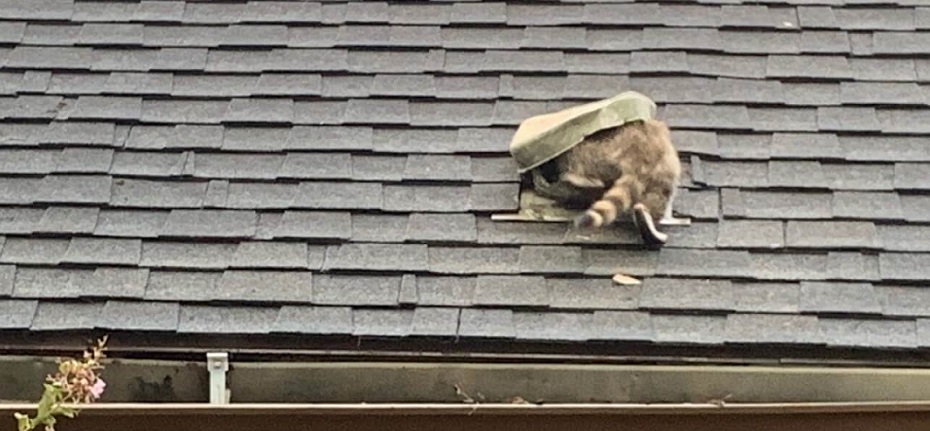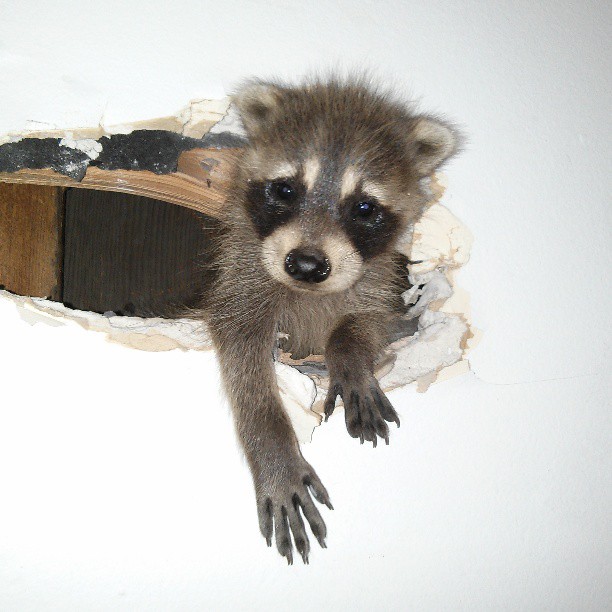One of the most obvious signs of a nuisance wildlife infestation is animal poop. An animal in your house will eliminate waste inside your house. Usually, that animal will avoid you at all costs. However, the sight of feces or the smell of urine is hard to escape.
If you find droppings in your attic or crawlspace, you probably won’t be able to identify them immediately. If you find animal poop in your home, the usual suspects are rats, mice, squirrels, raccoons, and squirrels. To help you investigate, here is a comprehensive animal scat guide for every critter most likely to be in your home.
What Does Racoon Poop Look Like?
Raccoon scat is typically 5-8 cm in length, and tubular. Raccoons tend to defecate in the same area called latrines. Latrine sites are commonly found on roofs, attics, wood piles, and on or under decks. Raccoon poop often contains undigested materials which give texture, such as seeds, berries, or bits of bone. They often leave the droppings in two or three segments sitting side by side or stacked on top of one another in different directions.
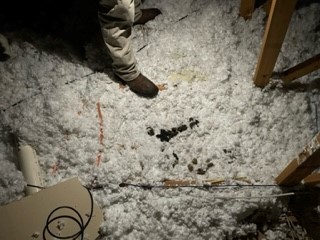
What Does Bat Poop Look Like?
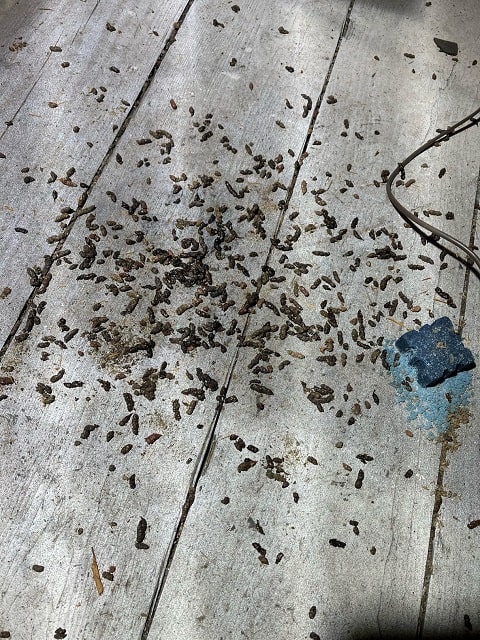
Bats are one of the most unique species in wildlife, and there are 18 species in Canada. Bat droppings in the attic can easily be mistaken for mouse droppings in size and shape. The primary difference between them is that bat droppings often occur in larger mounds or piles, as bats roost (hang) in the attic or living space. Additionally, bat poop (guano) can be irregular from one dropping to the next, while mouse poop is similar.
There is one useful bat-dropping identification trick, but this does not always work. As bats commonly eat up to 2/3 of their weight in insects, their excrement often leaves behind the tough outer shells of insects such as beetles. This gives bat poop a shiny or speckled coloring.
What Does Squirrel Poop Look Like?
In terms of size, expect anything between 8 to 25 mm, with a 3 mm diameter. With a much more diverse diet, squirrel droppings are often distinguished by its varied coloration. Squirrel scat can often present itself in hues, including beige, light brown, dark brown, green, and black. Typically, the scat groupings are more spread out (larger gaps between poops) relative to other rodent counterparts, likely because they are larger creatures.
What Does Rat Poop Look Like?
Roof rats and Norway rats are the most common rats in your house. Roof rat droppings are a little longer than 1 cm and look similar to mice poop. Both are tapered. In comparison, Norway rats have thick, cylindrical droppings with blunt ends, and often they will curve into a banana shape.
What Does Mice Poop Look Like?
Mouse droppings are approximately 1/4″ (0.635 cm), roughly one-third of the size of rat droppings. Mouse poop is also tapered or pointed on the edges. Lastly, mice will disperse their poop in different areas of the attic.
Mice vs Rat vs Squirrel Droppings
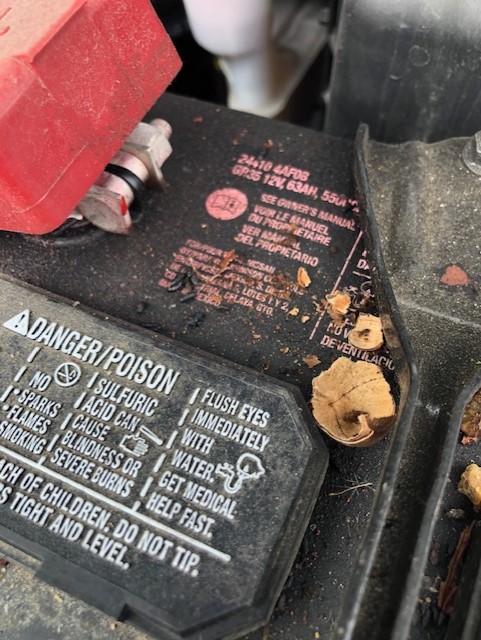
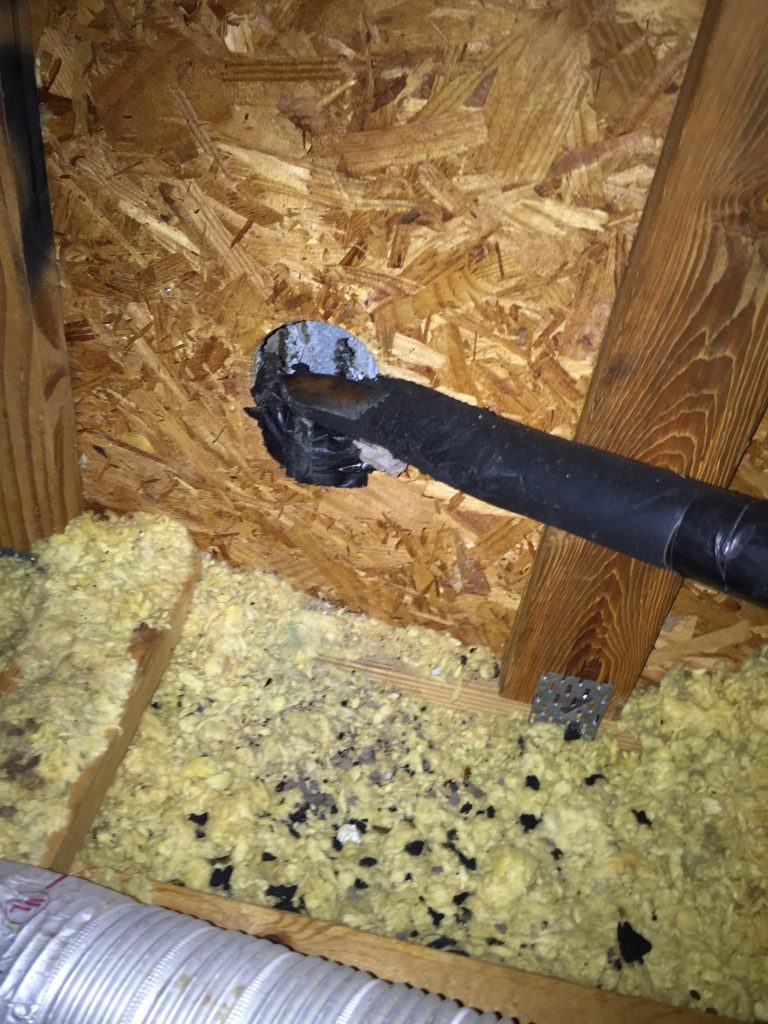
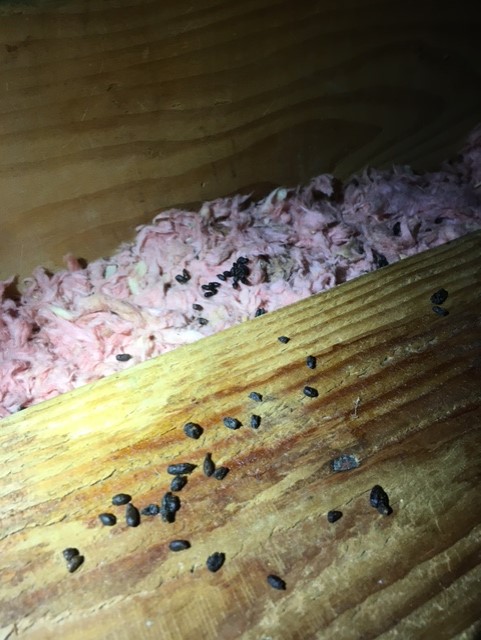
What Does Opossum Poop Look Like?
Opossum scat falls in the range of 2 to 5 cm in length. The poop is smooth and may develop a unique white or yellowish coloration. Notably, the Opossum poop tends to curve into a C shape like rat poo, which is the telltale giveaway. Sometimes, opossum scat is tapered.
What Does Skunk Poop Look Like?
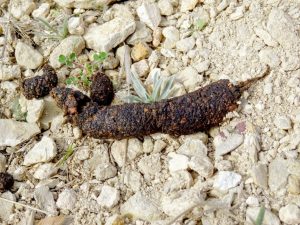
Skunk poop is similar to a cat, thicker and cylindrical, about 1 cm in diameter and 2 to 5 cm in length. The skunk poop is thickest in the middle and often tapers toward the end. However, the skunk scat sometimes forms into piles. With an omnivorous diet high in insects, berries, worms, and roots, the appearance is often rougher, irregular, and full of undigested content such as blackberry seeds. Coloration might have a purple or blue hue.
What Does Groundhog Poop Look Like?
Groundhog scat is medium-sized, similar in size to a skunk or raccoon. The droppings are oval-shaped, dark brown or black, and often in segments. They will often find a spot near the burrow, which will help in identification. It is rare to find groundhog feces because they poop in their burrows. You are much more likely to find their burrows and holes.
These critters might burrow under a bush in the landscaping, or if you have an elevated house or deck, this may be an inviting spot. Groundhogs are another species known to wreak havoc in your nicely tended garden.
How Dangerous is Animal Poop in My House?
Animal poop can spread diseases.
- Squirrel droppings can harbor typhus, leptospirosis, and tularemia.
- Bat poop is known to cause Histoplasmosis, a lung infection. Bats can carry rabies but this is incredibly rare for the species. Nevertheless, avoid handling bats or their poop.
- Rat and mouse droppings can spread serious illnesses such as Hantavirus and Salmonellosis, bubonic plague, and rat-bite fever. These are often spread through food contamination or transmission by air. They are most likely to occur in places where a mouse or rat infestation has occurred. Rat and mouse droppings are known to cause and worsen asthma.
- Raccoon poop can spread several diseases like leptospirosis and raccoon roundworm. Raccoon roundworm is transmitted by eggs in the animal’s feces, roundworms are inadvertently ingested when humans touch the feces, contaminated food, or polluted water sources and then touch their mouths. Young children are especially vulnerable to roundworms, which cause nausea, loss of muscle control, blindness, coma, and sometimes death.
What Do I Do if I Find Feces in My Home?
If you found scat in your home, you probably have a wild animal living with you. As much as we love animals, they are not paying rent, they can be destructive, use your dwelling as a bathroom, and top it off they can make annoying noises.
There are many DIY options, with hundreds of poisons, traps, homemade deterrents, and snake oils. Unfortunately, these are often ineffective or temporary solutions to a wider issue. Moreover, DIY wildlife removal solutions are unlikely to act as humanely as a specialist will, and involve putting yourself in a dangerous position with the named illnesses.
What is truly needed is professional animal removal services from an experienced wildlife specialist with all the tools to find the entrances, patch them up, and make the living spaces inaccessible. Additionally, these agents have the proper safety attire for professional cleanup and sterilization with the proper chemicals to keep you safe.
